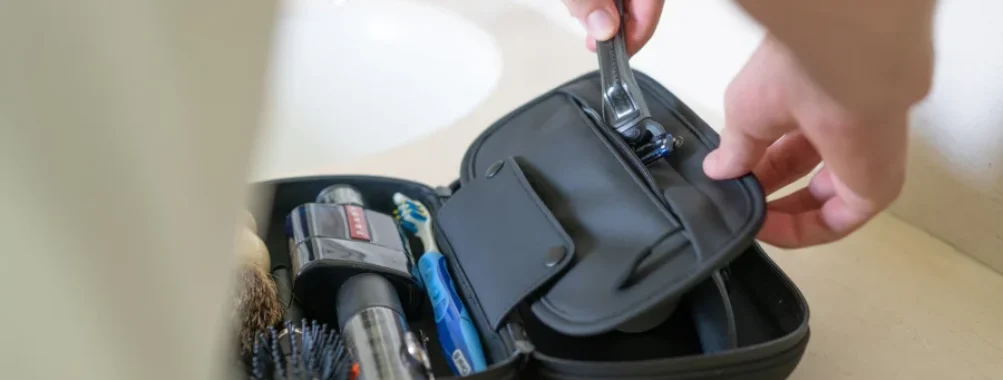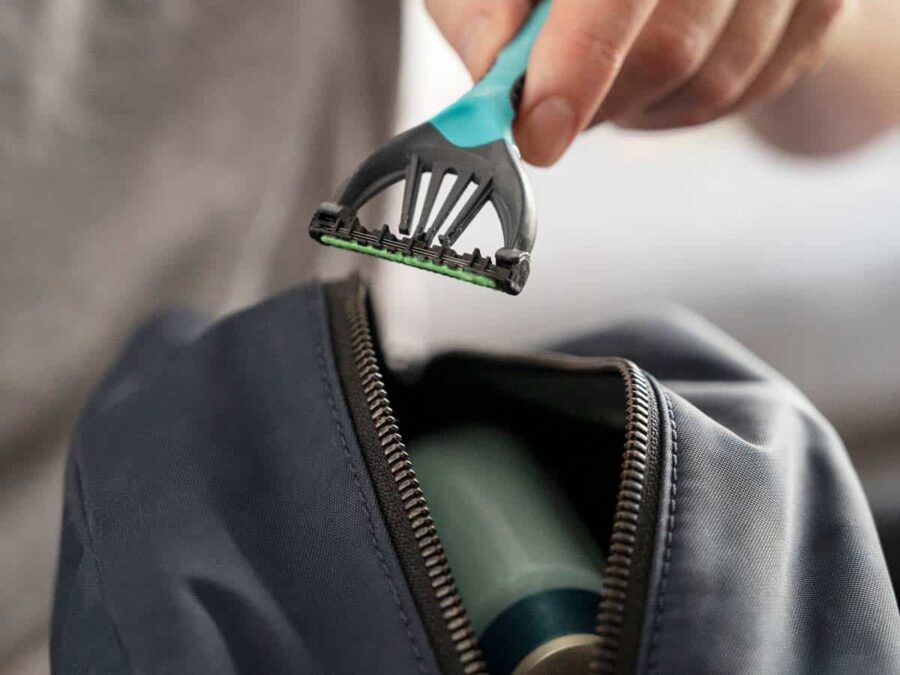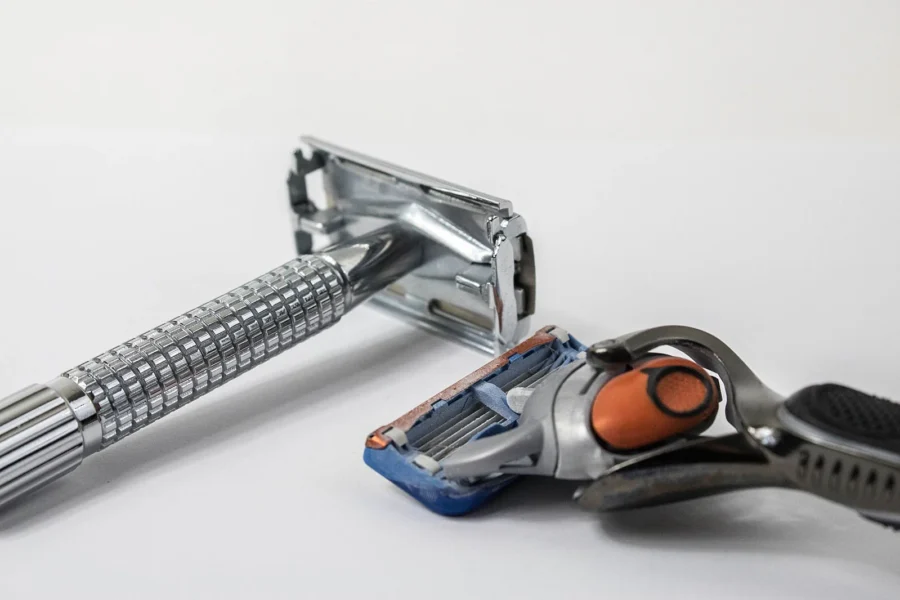
TSA Regulations: Can You Bring Shaving Razors on a Plane?
In the world of travel, understanding TSA regulations can mean the difference between breezing through security or facing stressful delays. One common question we often encounter as frequent flyers is: Can you bring shaving razors on a plane? It’s such a simple travel essential, yet its acceptance in carry-on luggage remains shrouded in murky gray air. To shave off any doubt and confusion, let’s dive deep into this topic and untangle the web of TSA rules surrounding shaving razors. Stay tuned, this information might just spare you an unwanted holdup on your next adventure!
Yes, disposable razors with a blade guard or shield are generally allowed in both carry-on and checked baggage according to TSA guidelines. This includes both plastic and metal disposable razors. However, it is always advisable to check with your specific airline for any additional restrictions or guidelines regarding shaving razors.
Contents
- Can Shaving Razors Be Brought on Planes?
- Types of Razor Blades: What’s Allowed and Not Allowed
- TSA Regulations for Razor Blades and Cartridges
- How to Safely Pack Razor Blades for Air Travel
- Approved Electric Razors for Airline Travel
- Tips for Traveling with Electric Razors
- Common Mistakes to Avoid with TSA Regulations
- More Travel Guides
Can Shaving Razors Be Brought on Planes?

Traveling can often make it difficult to stick to our normal routines, and shaving is no exception. However, if you’re planning to take a shaving razor with you on your flight, it’s important to know the rules established by the Transportation Security Administration (TSA) regarding these items.
Types of Razor Blades: What’s Allowed and Not Allowed
To understand TSA’s razor regulations better, we must first look at the types of razor blades available. The main categories are cartridge razors, disposable razors, straight razors, and safety razors.
Let’s start with cartridge razors – the kind widely available in supermarkets and drugstores. These are considered safe since their blade is enclosed within a cartridge. This means that passengers can pack them in both carry-on luggage and checked baggage without needing to worry about any issues.
Next up are disposable razors, which also carry no restrictions when carried in either carry-on bags or checked luggage. TSA allows both plastic and metal disposable razors as long as they come equipped with a blade guard or shield.
Now we get into the slightly trickier areas: straight razors and safety razors. Straight razors have an exposed blade edge that needs to be protected. These are not allowed in carry-on bags but can be included in checked luggage. On the other hand, safety razors may be allowed in carry-on as well as checked bags – only if they do not contain a removable blade. Think of it like bringing a pocket knife on board – you wouldn’t bring one with an open blade, right?
However, if it has a removable blade – which many modern-day safety razors do – it will need to go inside your checked luggage.
It’s worth noting that not all TSA officers may be familiar with the specifics of safety razors, so if you anticipate bringing one on board, come prepared with clarifications if necessary.
Now that we’ve gone over the types of razor blades and where they can be packed let’s explore the other considerations regarding the use of shaving razors during travel.
See Related: Can You Bring Vitamins on a Plane? TSA Regulations and Guidelines
TSA Regulations for Razor Blades and Cartridges

The question “Can you bring shaving razors on a plane?” is a common one among travelers, whether for business or leisure purposes. TSA regulations state that blades, razors, and cartridges can be packed in both carry-on and checked luggage but are subject to certain rules and restrictions.
Consider the airport security checkpoint as a giant sieve where all objects that do not pass through it without causing alarm will be taken out. Hence, compliance with these regulations is an important step towards avoiding any possible delays at airport security.
Airlines like American Airlines, United Airlines, Delta Airlines, Southwest Airlines, Alaska Airlines, Spirit Airlines, JetBlue, Frontier Airlines have their own razor regulations. So it is advisable that you check your airline’s policy before packing any razors for travel.
Federal Aviation Administration (FAA) also has strict guidelines for carrying blades or other sharp objects on board.
| Item | Carry-On Luggage | Checked Luggage |
| Disposable razors or cartridge razors | Allowed | Allowed |
| Razor blades not in a cartridge | Not allowed | Allowed |
| Electric razors | Allowed | Allowed |
It’s always good practice to keep sharp objects in secure packaging to avoid accidents and ensure smooth clearance at security checkpoints.
- The Transportation Security Administration (TSA) data for 2019 reported that over 4,432 firearms were discovered in carry-on bags at airports across the United States, an average rate of about 12.1 firearms per day. Though not related to razors specifically, this gives an idea about the amount of prohibited items passengers attempt to take on planes.
- According to a 2022 survey conducted by TSA, most travelers – approximately 71% of them – are aware that disposable razors are allowed in both carry-on and checked baggage.
- The same 2022 TSA survey revealed that nearly 60% of traveling passengers were unaware that safety razors with removable blades are not allowed in carry-on luggage but can be packed in checked baggage.
How to Safely Pack Razor Blades for Air Travel
Assuming the razor blade cartridges comply with TSA requirements would be insufficient if they aren’t well-packed. Here are some tips on how to safely pack razor blades for air travel:
- Handle the blades with care and wrap them securely in tissue paper or towel; this will prevent accidental contact when retrieving or repacking your bags.
- Consider using resealable plastic bags to prevent any jostling of items during transit.
- Use a plastic or metal cover for your razor blade to avoid any accidental contact with other items in your luggage.
- Store the wrapped razor blades in a durable container, ideally one that’s crush-resistant to prevent damage during transportation.
Let’s say you’re traveling with a straight razor. In that case, it would be beneficial to use a specific travel case or sleeve designed explicitly for these types of razors, as they will provide additional layers of protection.
Overall, packing and transporting shaving razors on flights does not need to be a complicated process so long as safe practices are followed conscientiously. However, it’s always important to stay up-to-date on any change in regulations and policies.
See Related: Can You Bring Cigarettes On A Plane? TSA Rules and Restrictions
Approved Electric Razors for Airline Travel
When it comes to traveling with electric razors, the TSA regulations indicate that any razor that operates on a battery or electricity can be brought in carry-on luggage. Typically, rotary electric shavers would be the better option since they lack removable parts that could potentially get lost during travel. In contrast, foil electric shavers could be problematic as they have delicate screens that could get punctured or damaged.
If you’re still undecided on which electric razor to buy, here’s a quick comparison of some popular models approved for airline travel:
| Model | Weight | Type | Battery |
| Philips Norelco PQ208/40 | <1 lb | Rotary | AA batteries |
| Braun M90 Mobile Shaver | 5.3 oz | Foil | AAA batteries |
| Panasonic ES3831K Electric Travel Shaver | 5.6 oz | Foil | AA batteries |
It is essential to note that before packing any razor in your carry-on or checked baggage, ensure that it is switched off and remove any loose blades or attachments.
Tips for Traveling with Electric Razors

Just like other electronic gadgets while traveling, electric razors require special attention to avoid damage and ensure smooth operation throughout your trip. Here are some helpful tips when traveling with an electric razor.
- Pack the charger: To avoid getting stuck with a dead razor halfway through your trip, ensure you pack its charger. It’s easy to forget about the charger because if fully charged, many units can operate for several weeks without requiring recharging.
- Prepare an essentials kit: Since electric shavers are compact and lightweight, having an essentials day-to-day kit with you can eliminate headaches figuring out what items you left back home. This includes extra batteries or blades, conditioner or shaving cream and a cloth to maintain the razor’s hygiene.
- Choose wisely: When purchasing an electric shaver for travel, it’s essential to choose one that is portable and lightweight. It should also have a long battery life to avoid the stress of running out of power when examining perimeters in airport security.
With these tips in mind, you’ll be able to keep your electric razor in tip-top shape while traveling. But as with any TSA regulation, there are common mistakes you must avoid.
- When traveling with an electric razor, it is important to pack the charger, prepare an essentials kit, and choose a portable and lightweight razor with a long battery life. These tips will help ensure that your electric razor remains in good condition throughout your trip.
See Related: Can You Bring Candles On A Plane? A Guide To TSA Regulations
Common Mistakes to Avoid with TSA Regulations
Whether you’re a first-time traveler or a seasoned veteran, navigating the ever-changing landscape of TSA regulations can be confusing. Failing to understand these regulations can lead to delays and even confiscation of items you brought onboard. Below are some common mistakes to avoid when dealing with TSA regulations:
- Assuming all airports follow the same rules: While most airports abide by the same TSA guidelines, there may be variations between different airline carriers and checkpoints. It’s crucial to check individual guidelines before arriving.
- Ignoring liquid restrictions: Liquids exceeding 3.4 ounces in volume should not be carried on board unless they’re medication or other necessary items. Ensure you pack your liquids appropriately and place them in a clear plastic bag.
- Packing prohibited items: Items like firearms and flammable materials shouldn’t be in your carry-on luggage or checked baggage. Ensure that you check individual carrier restrictions before heading to the airport.
- Failure to arrive early: Arriving at the airport without enough time increases anxiety and stress levels, leading to hasty decision-making and oversight of important details that could delay or halt travel.
For instance, if you’re uncertain about your shaving utensils’ compatibility, rushing through security instead of calmly communicating with TSA staff could lead to confusion and ultimately loss of a razor.
- Lack of Clarification when Communicating with TSA Staff: Communication is key when dealing with complex regulations like those imposed by TSA. If you have any doubts or questions, clarifying with officers can help prevent mishaps and ensure smooth traveling experiences.
By avoiding these common errors when dealing with TSA regulations, travelers can rest assured that their trip will proceed without unnecessary delays or disruptions. Remember – preparation is key.



